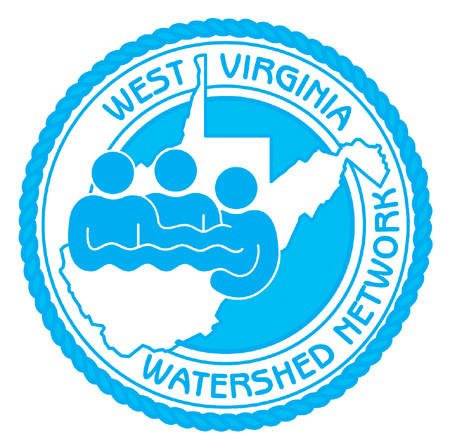 | | WV WaterNet: Summer Edition |
| |
|
| Registration Extended for WV Watershed Symposium Registration for the 2023 WV Watershed Symposium has been extended to Friday, August 18th. Don’t miss this opportunity to connect with watershed groups from around the state! The symposium will be held September 30th at Canaan Valley State Park. In addition to time set aside for networking, sessions will cover water trails, stream restoration, and research updates. Travel stipends are available, and there are rooms blocked if you would like to travel up the day before. Register and apply for a travel stipend here. |
| | Buckhannon River Coal Spill: Updates and Follow Up By: Martin Christ, WVDEP Northern Basin Coordinator |
| 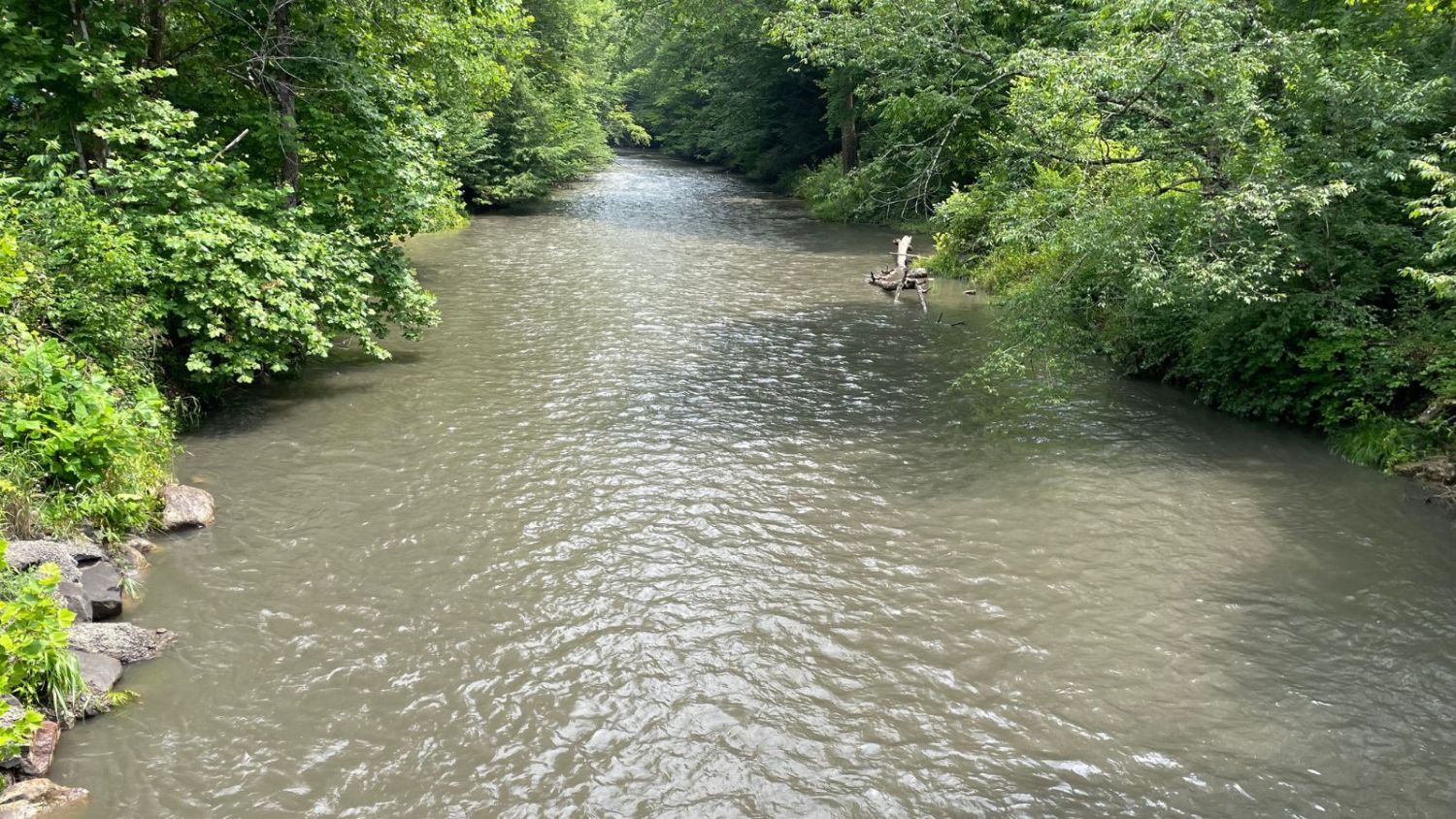 | | Coal sediment laden water in the Left Fork of the Buckhannon at Palace Valley on July 17th, 2023 On Sunday, July 16, WVDEP Stream Partners VISTA Jessica Bryzek was meeting people for a float trip on the Buckhannon River. At Hampton, a site just upstream from the City of Buckhannon, they found the river thick with black sediment and decided to paddle on Stonecoal Reservoir instead. Over the following days, MyBuckhannon.com and WDTV published stories on the spill. After a heavy rainstorm on Saturday, 7/15, approximately 4,500 tons of coal was washed into the river from the Preparation Plant (permit number O-203186) for the Carter Roag Coal Company. According to WVDEP, the spill did not cause any impact to aquatic life. I interpret this to mean there was no raft of dead fish going down the river. A resident of Alton, WV, a community almost four miles downstream from Alexander, also reported that no dead fish were floating down in the following two weeks. In addition, he had not seen any deposits of coal fines in the river. WVDEP sampled the water and laboratory results did not indicate any adverse impacts to the water chemistry in the streams. According to MyBuchannon.com, the slug of coal had little effect on the drinking water. The City of Buckhannon’s Water Department reported that they did not have to stop preparing water, they only needed to add more flocculant and adjust the chemicals they use to maintain the pH in the water. Flocculant helps particles in the water settle to the bottom of a tank. The spill raised the pH of the water slightly. Following the spill, WVDEP issued three notices of violation (NOVs) to the company. One NOV was for failure to maintain a sediment control structure; another was for causing a Condition Not Allowable (CNA) in the waters of the state.The third was for failing to notify The Spill Line within 24 hours of the spill. CNA is a term that comes from the state’s 47CSR02 rule on water quality standards. That rule states: No sewage, industrial wastes or other wastes present in any of the waters of the State shall cause therein or materially contribute to any of the following conditions thereof: Distinctly visible floating or settleable solids, suspended solids, scum, foam or oily slicks The Spill Line is an important component in emergency management. The Spill Line can contact all the water plants downstream to make sure they know that some kind of pollution is coming. |
|
|
|
|
| It is easy to get tangled up in the Buckhannon River’s branches. The mainstem of the Buckhannon River flows north from Alexander 22 miles to the City of Buckhannon and then another 23 miles to the Tygart River near Carrollton, 5-½ miles upstream from Philippi. The Left Fork and the Right Fork of the Buckhannon River meet in Alexander, WV. The preparation plant where the coal spilled is approximately ten miles upstream on the Left Fork, which flows down from the western side of Kumbrabow State Forest. The spill blackened the water for more than 30 miles. The Right Fork has its own Left and Middle Forks: Helvetia is on the Left Fork of the Right Fork. Silica and Pickens are on the Right Fork. |
|
|
| The coal seams mined near the Preparation Plant, Sewell, Sewell A, Peerless, and Hughes Ferry, have less than 1% pyritic sulfur, whereas the Lower Kittanning Coal Seam has 1.8% pyritic sulfur. Pyrite is the mineral that oxidizes to form sulfuric acid and dissolved iron in acid mine drainage. The Buckhannon River Watershed Association and West Virginia Water Research Institute have built five projects to combat AMD from the Lower Kittanning in tributaries near Alton and Alexander. |
|
|
| The Carter Roag facility is not actively mining coal; however, the prep plant is currently processing the last of the recently mined coal. Once that is complete, the plant will not be operational and remaining clean coal stockpiles will be shipped out by rail and the company will then begin cleaning up and reclaiming the area. WVDEP’s Division of Mining and Reclamation will continue to conduct regular inspections through the final reclamation to ensure the facility is complying with the terms and conditions outlined in their permit and state code. |
|
|
| | Paint Creek Spill & Community Resiliency By: Kate Cruickshank, DEP AmeriCorps VISTA |
| 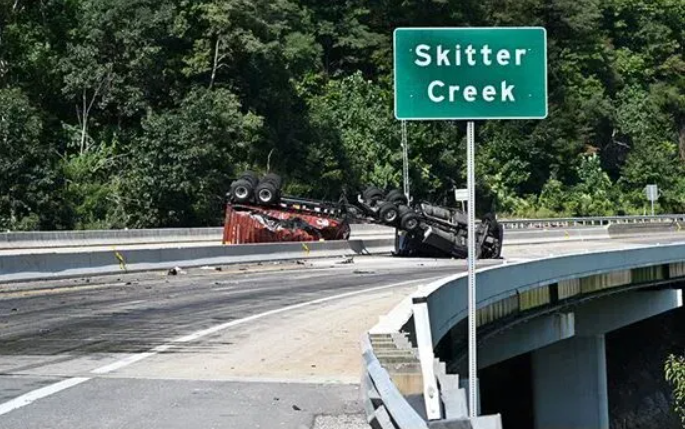 | | W.Va. turnpike reopens after crews contain chemical spill, clear crash site. WSET. Michelle Carroll, S. S. (2022, August 26). |
|
|
| In August 2022, a tractor-trailer carrying more than 12,000 gallons of amines solution crashed and spilled into Skitter Creek, a tributary of Paint Creek. This polluted the water of Paint Creek and the drinking wells ofresidents. For an extended period, people were forced to drink bottled water. The West Virginia Department of Environmental Protection (WVDEP) has had a Long Term Monitoring Station (LTMS) at Paint Creek since 2009. They collect data from the stream once a year during June or July. This station is downstream of Skitter Creek, where the chemical spill occurred last year. The WVDEP will continue to monitor their LTMS indefinitely. Their intentions are to monitor the spill site stations for several years. |
|
|
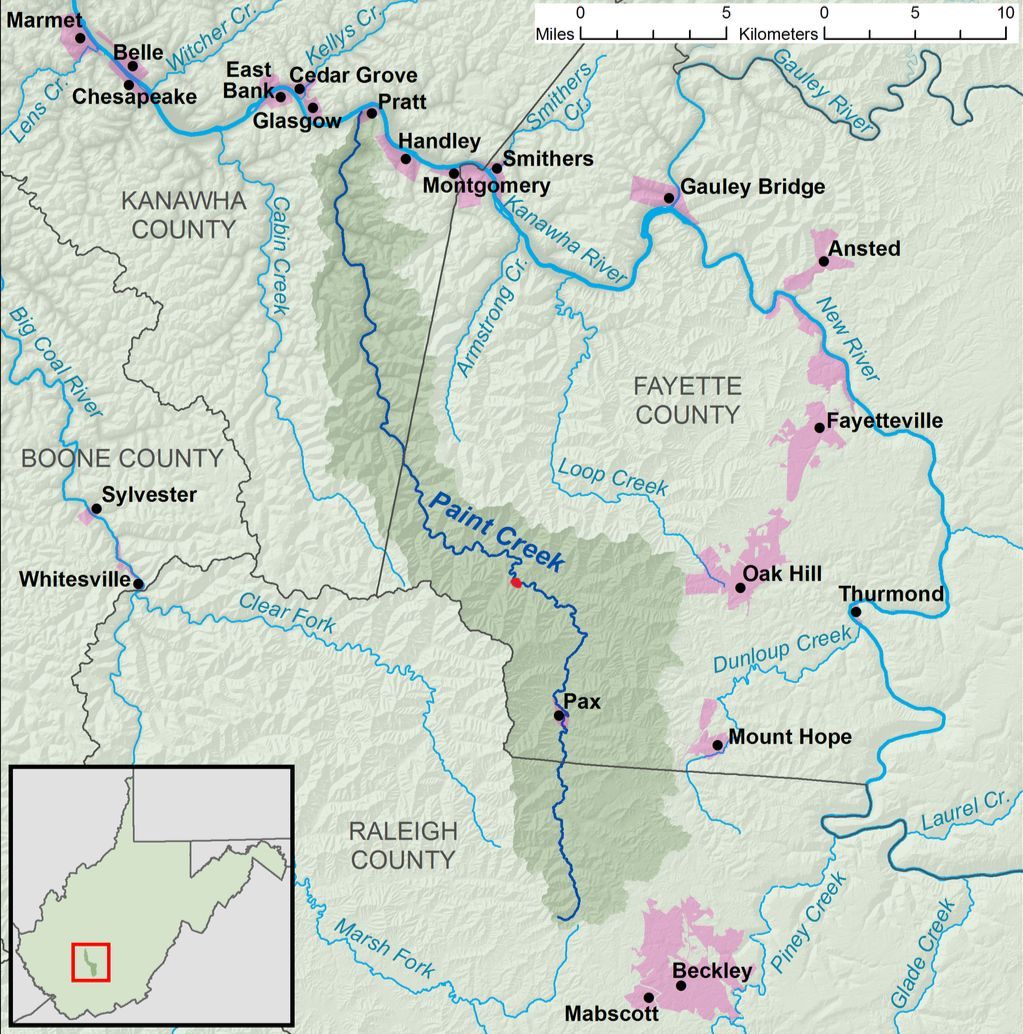 | | Paint Creek Watershed. The red dot denotes the location of the spill. Source: Wikimedia (2022, February 22). |
|
|
| The residents in the Paint Creek Watershed are resilient in their efforts to keep the creek clean. Paint Creek Watershed Association does waterway clean-ups with both Make-it-Shine and Adopt-A-Highway. These clean ups keep the water clean and clear of litter and debris. During these events, volunteers from all over Paint Creek come and help keep the creek clean. No matter what threatens Paint Creek, the residents and watershed association never give up fighting for their watershed. |
| 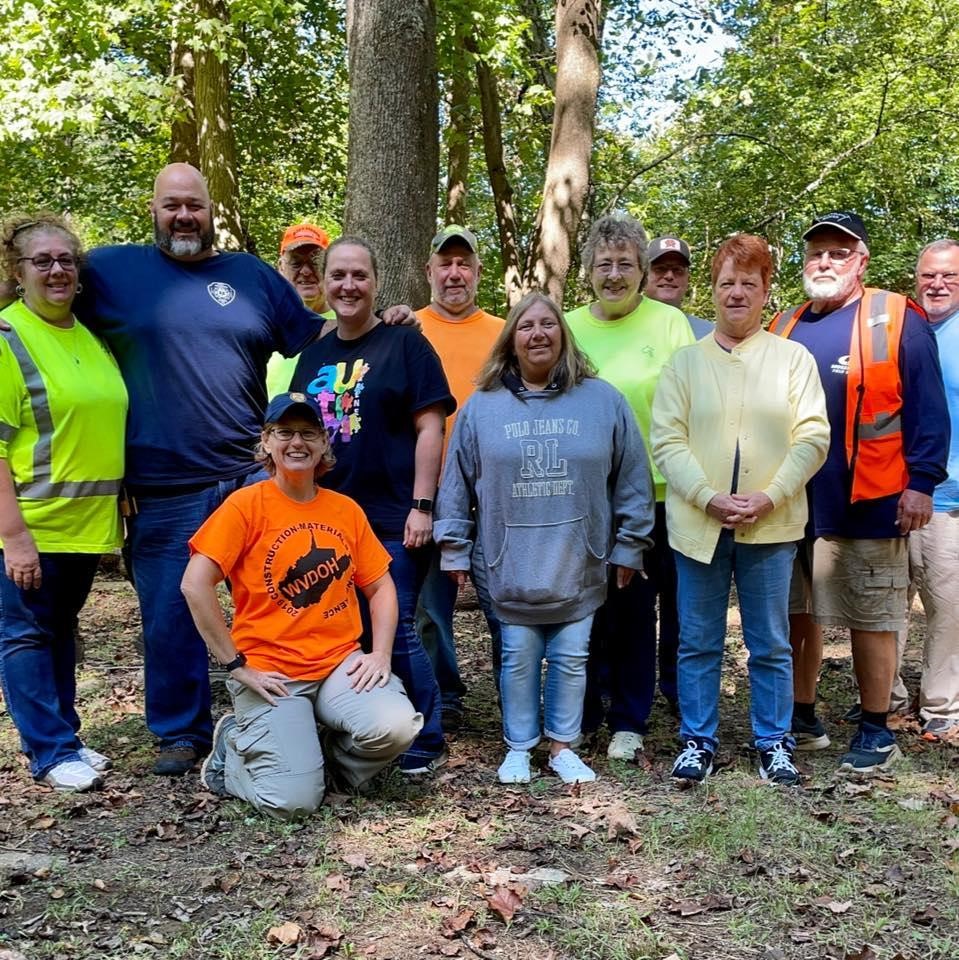 | | Paint Creek Watershed Association |
| | North-Central WV Communities Celebrate Their Local Rivers By: Jessica Bryek, Northern Basin AmeriCorps VISTA |
| 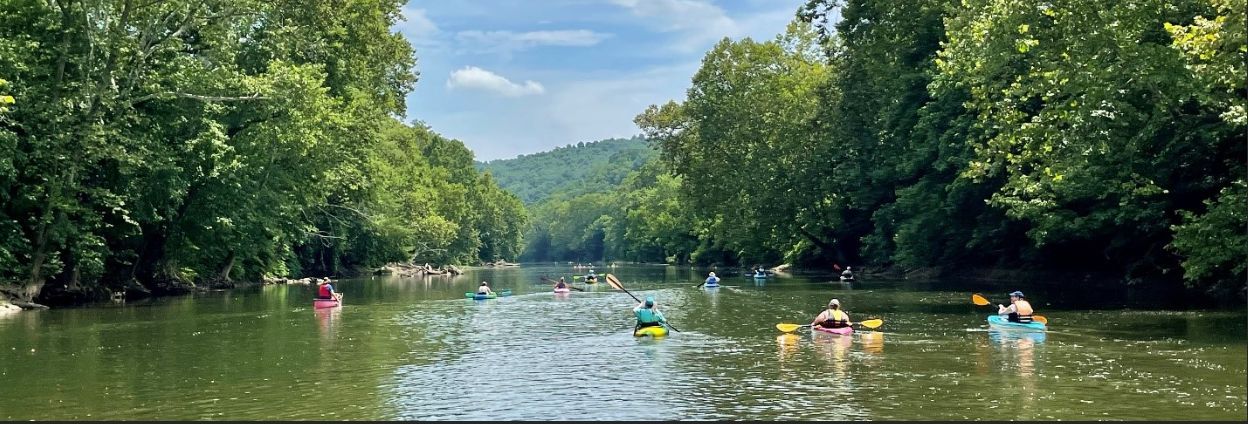 | | Paddlers enjoy a beautiful float on the West Fork River from Monongah to Worthington. The beautiful rivers of North-Central West Virginia, the Monongahela River and its major tributaries, provide numerous opportunities for water-based recreation. From kayaking heart-pumping whitewater to paddling serene flatwater or enjoying the river from a rail-trail on foot or bike, there is a stretch of water for everyone to enjoy. Numerous communities celebrated their local rivers this summer with water related events and festivals, introducing both locals and out-of-towners to our wonderful waterways. The plethora of support for these events and water recreation demonstrates that our rivers are valuable natural assets. Each major tributary of the Monongahela River had its own celebration: Cheat Fest on the Cheat River, Weston Carp Festival and Float the Fork West Milford on the West Fork River, the Tygart Valley River Rally on the Tygart River, and the Buckhannon RiverFest on the Buckhannon River. Other water-based events include weekly community paddles. The Guardians of the West Fork hosted a flatwater paddle every Thursday in Clarksburg, while Friends of Cheat offered Whitewater Wednesdays near Kingwood. Other special paddle events include Meet the Cheat on the Cheat River, the Jack Barker Memorial Kayak Race on the Buckhannon River, and a pop-up paddle from Worthington to Monongah on the West Fork River. Annual festivals such as the Blue & Gray Festival and LurchFest, both in Philippi, included community paddles as part of the festival for the first time. While all these events were organized by local watershed non-profits, other recreational groups such as the Morgantown Area Paddlers (MAP) and the Fairmont Floatilla are extremely active, attracting diverse support for our riverways and making a positive impact in their local communities. MAP and the Floatilla organize community paddles throughout the region. The Flotilla even hosts a weekly paddle every Tuesday evening on the Monongahela River at Prickett’s Fort State Park. The Floatilla also hosts special events, one of the most popular being a Moonlight Paddle on the Monongahela River near Palatine Park during the full moon. Driving around and seeing kayaks and canoes strapped to the tops of the cars or in the beds of trucks always brings a smile to my face. People are connecting with their rivers. |
| 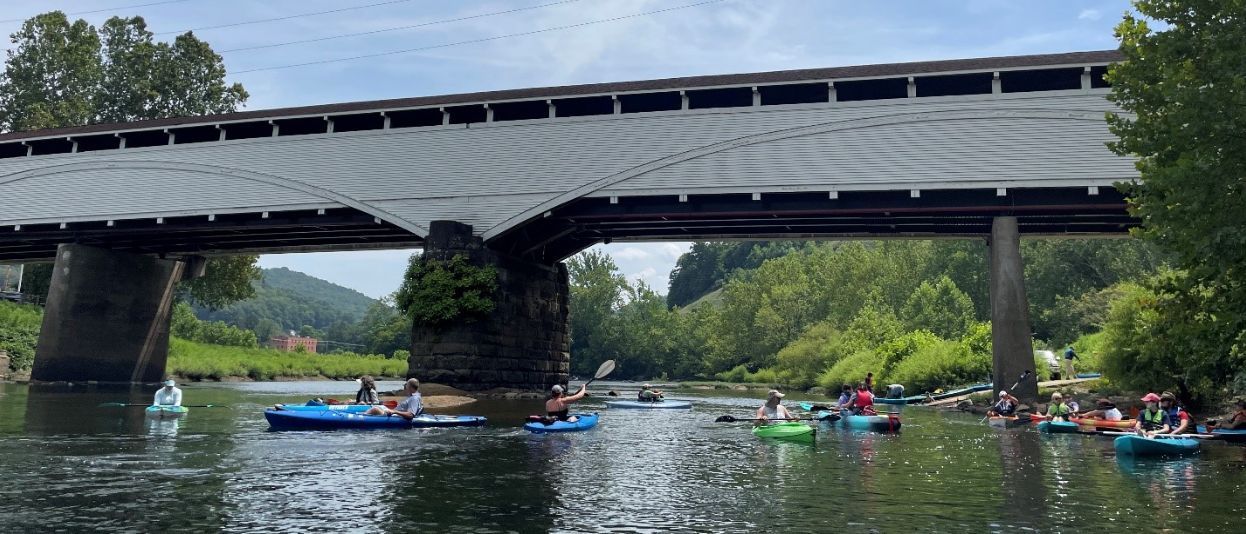 | | Kayakers float on the Tygart Valley River under the historic covered bridge in Philippi. For more information on community paddles, be sure to follow these Facebook pages: Morgantown Area Paddlers, Fairmont Floatilla, Guardians of the West Fork, West Fork River Water Trail, Save the Tygart Watershed Association, Buckhannon River Watershed Association, Buckhannon River Paddlers, Friends of Deckers Creek, Friends of Cheat, Cheat River Water Trail |
| | A Reflection on River Snorkeling By: Jared Stewart, WVDEP Watershed Improvement Branch Western Basin Intern |
| 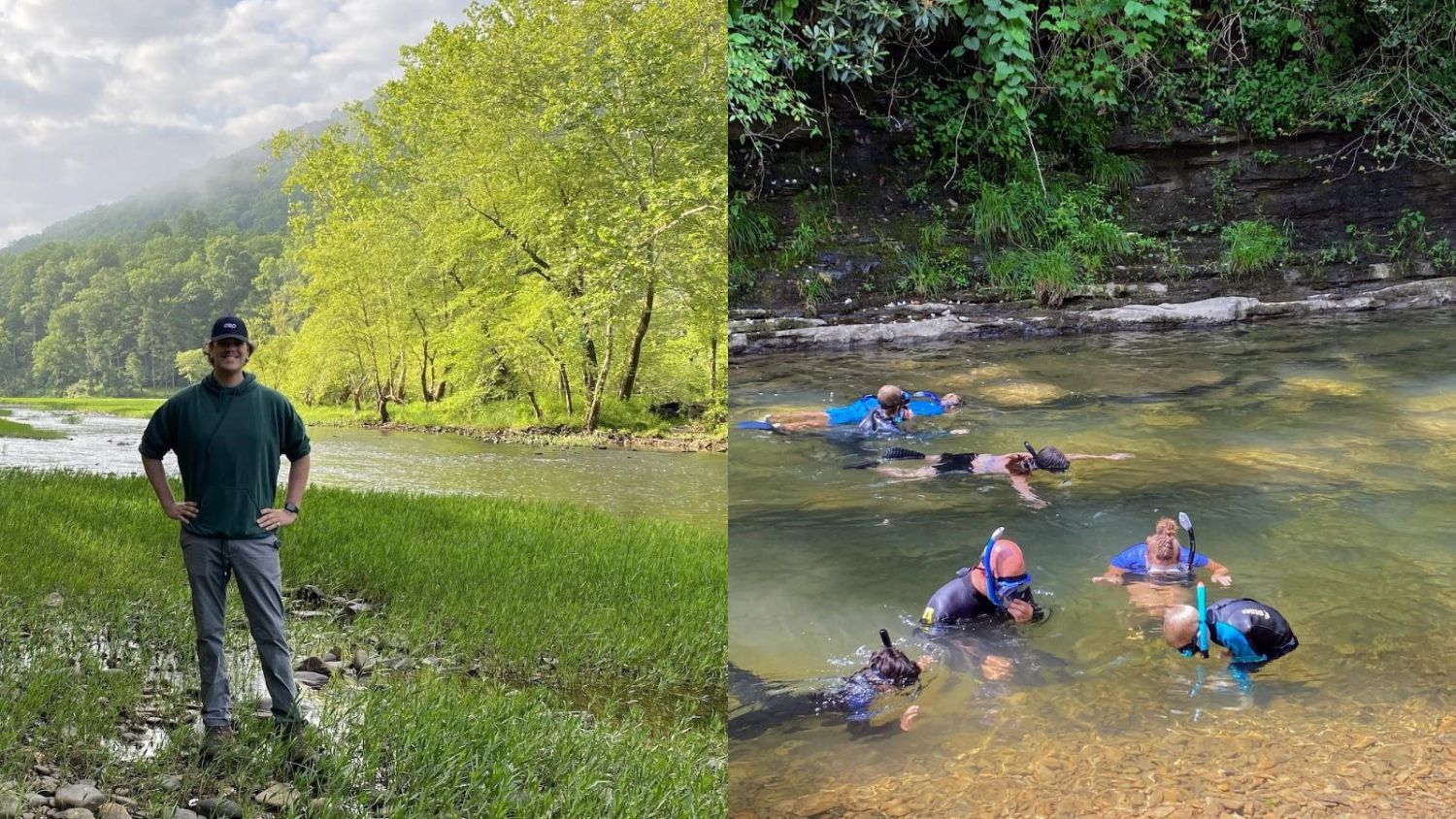 | Over the Summer of 2023, I have been lucky to engage in various outdoors events throughout the state of West Virginia. As a non-native West Virginia resident, this was a great opportunity to explore the state I have lived in for a few years now, and to meet people from all walks of life who also call West Virginia home. One of the places I have traveled to several times this summer was Seneca Rocks. On one of these occasions, I was in attendance for a joint Save Our Streams and USFS Snorkeling Workshop. In the cool, clear waters of the North Fork South Branch of the Potomac River, under the shadow of the peaks of Seneca Rocks, myself and a group of ten or twelve others participated in our first freshwater snorkeling excursion. Our guide, Chad Landress of the USFS, showed us the basics, and stuck in the middle of the group as we made our way upstream. As we advanced in more or less of a line, Chad discussed various species of fish we encountered, pointed out unique underwater habitats, and instructed us all on how to properly identify, catch, and handle aquatic life, from benthic macroinvertebrates, such as crayfish and hellgrammites, to trout, darters, and sculpins. White-tailed deer observed the convoy from the riverbanks. Being submerged in the water inspired a peace unlike many other experiences. The colors of the fish, pebbles, and boulders, and light filtering through the water, and silence were entrancing. Although required to keep a hold on rocks or underwater tree limbs to keep from being swept downstream by the current, snorkeling was an incredibly relaxing experience nonetheless. The magic of snorkeling had the same effect on all members of our group, regardless of age and background. The kids in this and other snorkeling groups over the summer seemed to enjoy snorkeling most out of all other outdoor activities, and some refused to leave the water for our entire allotted time. Afterwards, they always had a multitude of questions for Chad and other USFS personnel to answer. Nowadays, when it seems to be a challenge to get kids engaged with the environment and/or environmental careers, it appears that snorkeling is the great difference maker when it comes to capturing their attention. Freshwater snorkeling not only won over the kids during the summer events I attended, but I believe it also inspired the adults among the groups, myself included, to get out and do more in our communities to protect our resources and engage in environmental work; events such as snorkeling, fishing, and other recreation require clean water sources and healthy habitats for aquatic life to be possible. Snorkeling serves as both an enjoyable recreational activity, and a valuable opportunity for education, highlighting careers in environmental work, and engaging with the public. |
|
|
| | Recorded Webinars and Trainings |
| | Creating Engaging Zoom Webinars Recording Do you want to make your organization’s Zoom webinars and meetings more organized and engaging? Check out the recording of Reimagine Appalachia’s ‘Creating Engaging Zoom Webinars’ training: Creating Engaging Zoom Webinars This webinar goes over: -
a logistics check list to make sure your event is organized and easy-join-participate for registrants -
accessible ways to share your Zoom call on social media -
interactive tools to keep your participants engaged -
and more! Reimagine Appalachia has also put together a Zoom Guidebook that goes over the logistics of running a Zoom webinar. This guidebook, which will be regularly updated, can be viewed here. |
| |
|
| |
|
| | West Virginia Rivers Coalition
3501 MacCorkle Ave SE #129 | Charleston, West Virginia 25304
304-637-7201 | wvrivers@wvrivers.org |
| The WV WaterNet is made possible through an award of Environmental Protection Agency’s 319 funding awarded to the West Virginia Rivers Coalition by the West Virginia Department of Environmental Protection. |
|  | |
|
| |
|
|